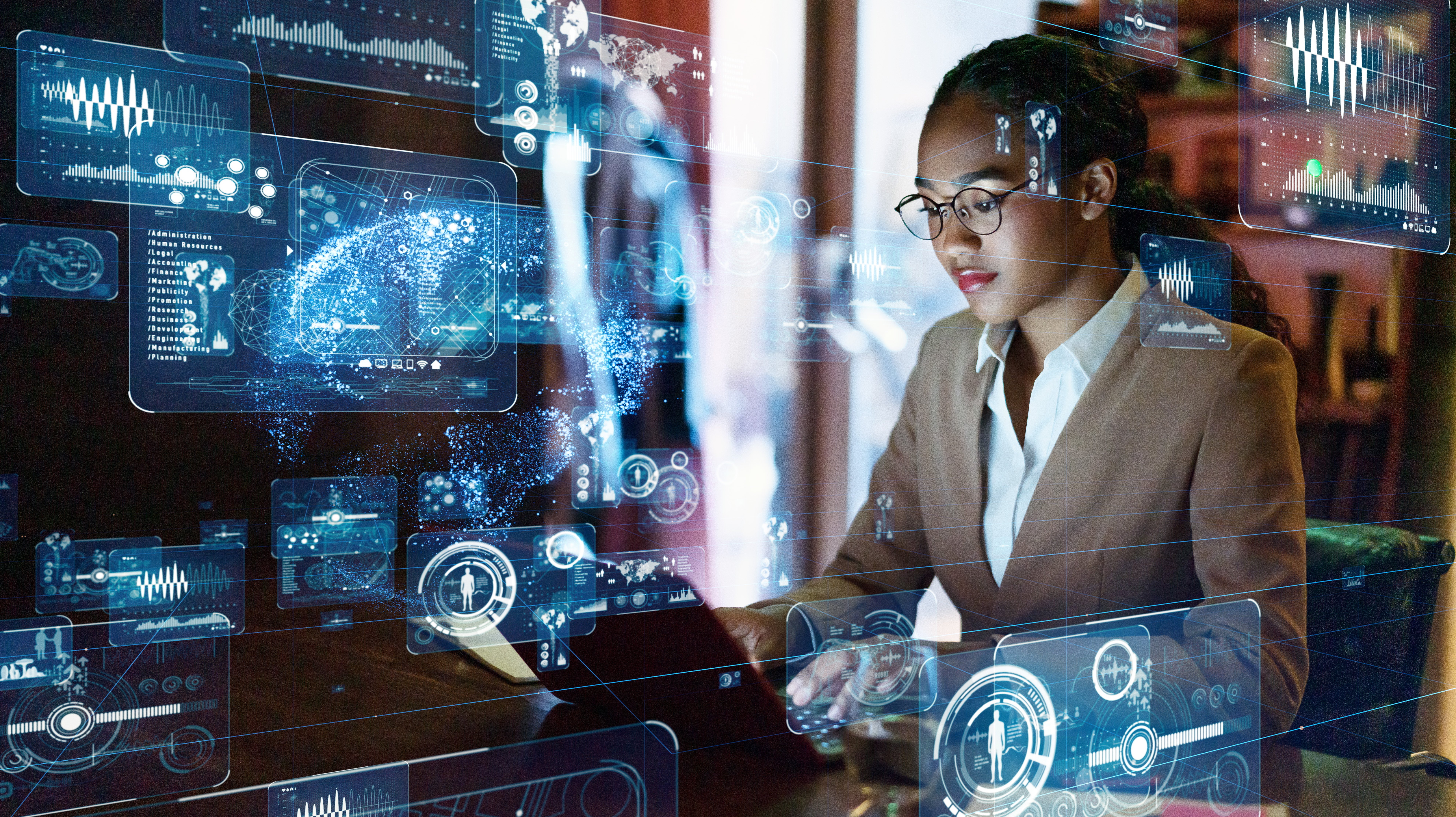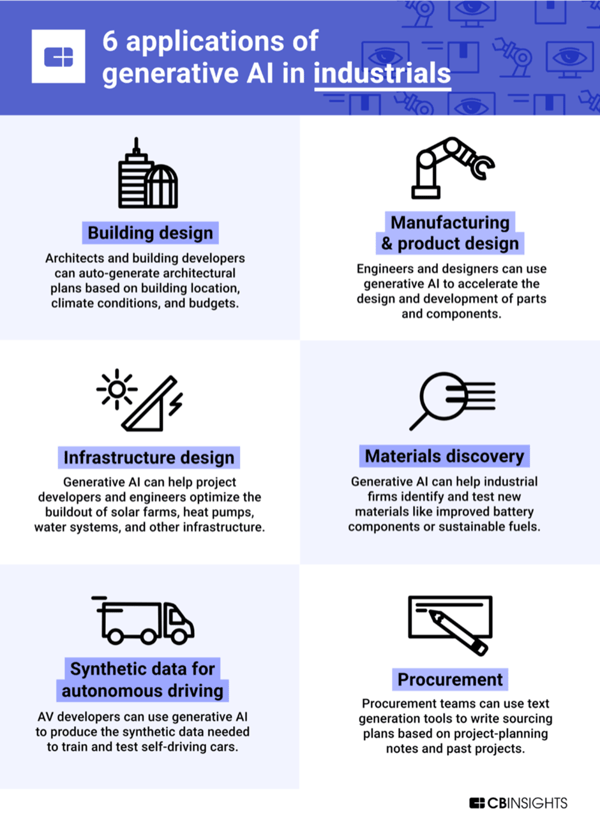March 4, 2024
 by Christopher Raymond / March 4, 2024
by Christopher Raymond / March 4, 2024

Generative AI has taken center stage in business agendas since its debut in November 2022.
Generative AI refers to a major class of artificial intelligence responsible for content creation. It’s already causing major disruptions in various industries, especially the labor sector.
Compared to typical AI that relies on particular sets of rules, Generative AI relies on GPT, one of the machine learning (ML) models that help it to create content autonomously. The models use large amounts of data to predict human language's patterns, nuances, and context.
According to Goldman Sachs, generative AI will eventually automate 300 million jobs. With that in mind, read on to uncover how AI will influence the future of work.
Generative AI is a new kid on the block and somewhat strange to many people. As such, AI and generative AI often get confused. In some cases, some consider generative AI superior to the traditional AI.
For starters, traditional AI's primary purpose is to assess and interpret intricate patterns and data for us humans to understand. But when it comes to generative AI, it goes a step further. By using the data we feed it, it can create new content for us to consume.
It’s even more popular when innovating and creating work. In the architecture and design industry, it already stands out as a popular tool among the professionals in these fields.
Generative AI has immense potential, but even so, there’s still a place for traditional AI now and in the future. Traditional AI comes in handy when it comes to research and precision in the workplace. As such, neither tool can function independently.
However, generative AI needs the capabilities of traditional AI to work efficiently. Because of this, traditional AI remains center stage regarding automation solutions built to boost operations.
As a source of empowerment among innovative and creative professionals, Generative AI is a more popular tool than traditional.
You can use it for problem-solving and creation in different sectors, and as of now, it’s already in practice in these industries.

Source: CBINSIGHTS
Both traditional and generative AI can work together to compose something new using existing music and artistry.
These tools allow you to inspire by enabling you to push past conventional boundaries.
With the help of generative AI, you can delegate some of your tasks to a virtual assistant. You can focus on important issues while the AI handles repetitive tasks, such as task management, scheduling, and personalized assistance.
AI can be resourceful in healthcare, especially in the diagnostic sector. Some generative AI models capture, assess, and translate diagnostic reports. They also help medical professionals identify abnormalities or patterns in patient data.
Healthcare professionals can turn to generative AI to create accurate diagnostic reports with less time needed for analysis.
Generative AI can help you make informed decisions in your business since it uses data to provide predictions and insights.
If you’re in the healthcare or finance sector, this tool can provide forecasts with better veracity. Your margin of error shrinks significantly.
Maintaining customer trust and building a positive track record in the supply chain business is never easy, but it turns out that generative AI in this sector can lighten the load.
With its predictive and analytical capabilities, businesses can optimize inventory and meet client demands.
The tool can also help identify setbacks in the process and offer guidance for improvement. This is all possible through the analysis of previous data.
Detecting fraud is a vital aspect of many finance careers, but it’s not a simple one.
Generative AI’s ability to analyze vast data and provide accurate insight can be an excellent resource for this work. That means finance experts can detect fraud patterns more easily and develop potent solutions to safeguard their systems.
Generative AI can enhance cybersecurity measures and assess traffic patterns on networks to identify anomalies that need attention. Also, it can find potential threats and provide viable defenses.
Managing HR processes and staff recruitment comes with a unique set of challenges, but when you introduce generative AI to the process, the probability of overcoming those challenges increases.
The tool uses the candidates' data, cross-checks it, and determines the ideal match for the available position. Thanks to that, HR can create winning teams. Additionally, you reduce the time wastage that generally occurs during recruitment.
Generative AI can help recognize patterns and predict trends.
It’s faster and has the power to process massive datasets. For example, marketers use generative AI to identify reliable media contacts.
Global businesses must integrate generative AI in their language translation, learning, and localization workflows.
With the help of this tool, businesses can maintain accurate and culturally appropriate communication.
Source: Pressfarm
Organizations can also use it to develop custom and immersive learning programs to help people interested in foreign language education. What’s more, generative AI creates simulations of real-world conversations. As such, learners have a better opportunity to practice.
Finally, when students have a customized learning program, their chances of succeeding are higher. They have more control over their time and gain the confidence to complete the program.
Marketers can use generative AI to tailor their strategies to fit their customer profiles. They can collect and assess customer data to customize marketing campaigns, product recommendations, and advertisements.
Generative AI can also structure press releases to make them more effective.
Customer service is another area in business that requires intense human effort. But through generative AI, agents can divert that work to other vital areas of business.
They can also set up generative AI to develop chatbots that handle client inquiries.
Developers can utilize generative AI to generate code and repair bugs. With your engineering skills and AI’s capability, teams can improve workflow.
Generative AI supports multiple functions. It can assist designers with graphic, creative brainstorming, or layout suggestions.
This tool can inspire creatives to automate some processes and generate design variations. As such, the turnaround time for a prototype is less than normal. Clients even get different versions of the design to choose from.
Introducing generative AI in the workplace comes with unique challenges that require careful navigation.
As a transformative process, organizations must get professional assistance for successful integration. These are the ideal places to receive help.
AI consultancy firms have the expertise to help businesses successfully establish generative AI practices. Even better, they can also assist with employee training.
There are government and industry-led programs that can help businesses adopt this technology.
Depending on the region, organizations may be able to find resources, subsidies, and grants that can support the implementation of this tool.
Internal training programs can help employees fill in knowledge gaps and make sure everyone has the same information about how to use it.
While generative AI can be an important resource, it’s also essential to consider ethical aspects, among other potential pitfalls. Here are ways to navigate the challenges that come with this, too.
There’s more to generative AI than just getting it and putting it into use. For accuracy, reliable data, and fewer biases, trained personnel need to sit at the helm. Training staff on how to use this tool improves the chances of it delivering the desired results.
Policies help govern the use of generative AI tool. Therefore, leadership has to set rules and regulations regarding its use.
Educating employees about its implications is vital to ensure no employees cross any ethical lines.
Lack of training about the potential implications of using this tool sets workers up to fail. Further, businesses can assemble a team to guarantee that everyone adheres to the ethical guidelines.
Having a team constantly monitoring the generative AI can be crucial.
Through their assessment, leaders can determine if the tool is operating accurately. They can also improve their performance by making adjustments where it’s necessary.
Organizations mustn’t rush into trusting the data from generative AI without double-checking for verification.
It relies on the available data to deliver results, so sometimes it provides inaccurate information. But with data verification systems, businesses have less to worry about. The system provides only accurate, quality, up-to-date information.
Of course, this tool promises immense benefits, but even so, it comes with a fair share of setbacks you need to consider.
Let’s examine some of them.
This is one of the major concerns when it comes to AI in general. To deliver results, the tool relies on existing data sets.
As such, copyright infringement becomes an issue. People can also use this tool to generate fake news, deep fakes, and spread misinformation. All this can lead to consequences in the real world.
Generally, even experts have no control over generative AI’s access to data, and it’s even harder to regulate who can use the data from this tool.
Because of this, data privacy has become a significant concern. It also means that personal data is at risk since the tool can quickly get to it.
Generative AI relies on existing data to generate results. If the existing data is consistently inaccurate, the final result from the tool passes on the inaccuracy.
Despite its immense intelligence, generative AI is like any other digital solution. It requires constant maintenance and regular updates.
Results from the generative AI can be unpredictable. As such, human intervention is still essential for the final outcome.
AI has a significant influence in various industries. And with the continuous adoption across sectors, it’s bound to affect the future of work.
The impact of this tool is both positive and negative. On the positive end, it makes work easier through automation and helps in decision-making. Not to mention, it’s a robust solution when it comes to virtual security.
On the negative end, the tools may take over millions of jobs that can be automated. By harnessing the power of generative AI, you – an individual or organization – can navigate the future with confidence.
Delve into the ethics of AI and read 4 essential questions we should ask to gain crucial insights.
Edited by Aisha West
Christopher Raymond, Pressfarm's Director of Customer Success, is an accomplished customer success specialist. He is the driving force behind making sure clients get the most out of their investment in Pressfarm's PR software thanks to his extensive experience and track record. His unique solutions to improve user experience and happiness are developed and put into practice as part of his strategic approach to customer success. Finally, his specialty is building trusting relationships with clients, comprehending their particular needs, and customizing solutions to produce the best outcomes.
Think back to March 2020, when remote work was brand new and conversational generative AI was...
 by Gil Pekelman
by Gil Pekelman
IT service management (ITSM) is critical in supporting business operationsand ensuring...
 by Manish Sharma
by Manish Sharma
From personalized customer experiences to efficient supply chain management, generative AI is...
 by Carl Bleich
by Carl Bleich
Think back to March 2020, when remote work was brand new and conversational generative AI was...
 by Gil Pekelman
by Gil Pekelman
IT service management (ITSM) is critical in supporting business operationsand ensuring...
 by Manish Sharma
by Manish Sharma


